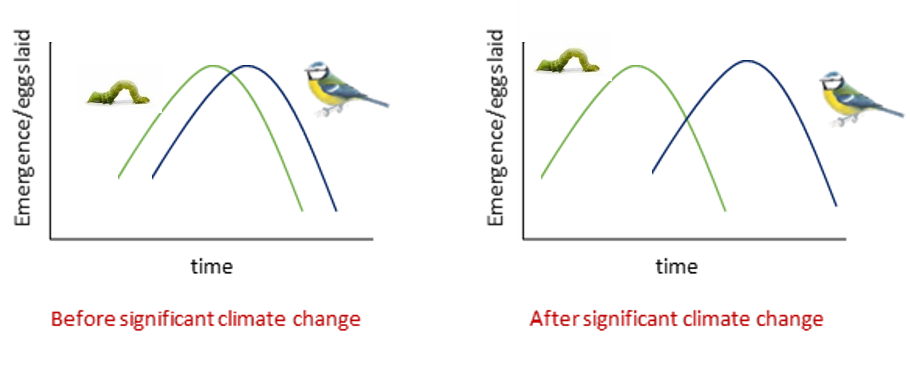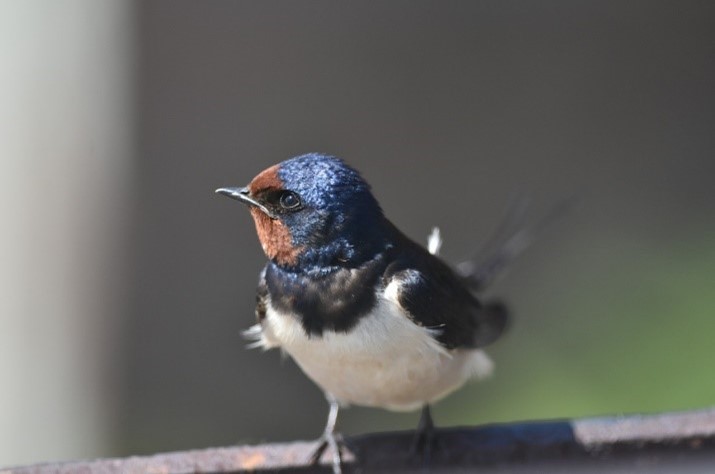This year, NHBS was proud to sponsor the BES Undergraduate Summer School.
This annual event is open to undergraduate students studying in their 1st or 2nd year at a UK or Irish university. The week-long programme provides training in a range of practical, ecological skills alongside networking events and career workshops.
Due to Covid-19 the 2020 Summer School was conducted online. As one of their tasks, students were asked to write a blog article on a subject of their choice. We are pleased to feature a number of their submissions here on the NHBS blog. The first, by Hannah Coburn, looks at the timing of breeding and migration in birds and how the changing climate can impact this.
Hannah Coburn
Changing Times
Phenology refers to the timing of key life events in organisms, which play an important part in every species’ ecology [1]. The phenology of birds, including the timing of breeding and migration, is a well-studied field due to its popularity and ease with which it can be studied [2]. Many bird species have evolved to court, nest, mate and, in some cases, migrate at precise times of the year, in order to coincide with ideal conditions and the height of availability of crucial food sources [1]. However, the changing climate is beginning to disrupt these intricate balances.
Different organisms are acclimatising at different rates to the changing climatic conditions, and this dissonance can be catastrophic for breeding birds, particularly migratory species [3]. For example, if trees begin to produce leaves earlier, the invertebrates that feed on their leaves begin to emerge sooner, and if birds relying on these invertebrates do not lay their eggs earlier in the season, they may miss the peak of the insect abundance and be unable to feed their chicks [1].

The loss of synchrony between the phenology of birds and the species they interact with is already having a variety of consequences. A study in the Netherlands examining the potential impact of climate change on two woodland bird species [3] found that Great Tits, a resident species, respond to temperature changes faster than Pied Flycatchers, a migratory species. This is due to the Tits being able to respond to local temperatures and food availability while the Flycatchers are restricted by the time at which they arrive in spring. It was also predicted that migratory birds may suffer as a result of heightened interspecific competition caused by higher numbers of resident birds surviving milder winters.
Some bird species have already been proven to have advanced the times at which they migrate, in response to increasing global temperatures. A large study of migration data from European and North American bird observatories [4] discovered that birds now migrate on average a week earlier than they did in the late 1950s. While some birds have remained relatively consistent in the times in which they migrate, some species such as the Goldeneye, a diving duck, are now migrating as much as two weeks earlier than they did just forty years ago. Juvenile birds, under less pressure to reproduce, showed little change in migration timing. Another study [5] that analysed global migration data covering almost three centuries and over 400 species found that, on average, birds had migrated two days earlier (in spring) per decade and 1.2 days per degree (Celcius) of global temperature rise. They also noted that generalist species had responded faster to climatic shifts than species that had more specialist niches.

Even in my home town, I have noticed migrants such as Swallows and Swifts arrive earlier and earlier. Is it because the birds migrate in response to certain temperatures, which are coming earlier in the season? Is it because individuals that migrate sooner are now more likely to survive and so this trait or behaviour is becoming more common? We are yet to uncover all the intricacies of bird migration. Like any other aspect of biology affected by climate change, it is the species that adapt fastest that will survive. Sadly, if we fail to prevent runaway climate change, the birds that are unable to synchronise their phenology to the new normal may be lost forever.
References
- Rubenstein, M. (2017). When timing is everything: migratory bird phenology in a changing climate. S. Geographical Survey.
- Gordo, O. & Sanz, J. J. (2006). Climate change and bird phenology: a long-term study in the Iberian Peninsula. Global Change Biology.
- Samplonius, J. M. & Both, C. (2019). Climate Change May Affect Fatal Competition between Two Bird Species. Current Biology, 29(2):327-331.
- Learn, J R. (2019). Climate change has birds migrating earlier. The Wildlife Society.
- Usui, T., Butchart, S. H. M. & Phillimore, A. B. (2016). Temporal shifts and temperature sensitivity of avian spring migratory phenology: a phylogenetic meta?analysis. Journal of Animal Ecology, 86(2).


Hi Hannah
Loved your research very Interesting
I have a particular passion for birds and carried out research on Pied Wagtail during my degree